What good is launching a new business, if nobody knows about it?
With more than 540,000 new businesses starting each month, it goes without saying that you’re facing some serious competition.
If you don’t take the right approach to PR, marketing, and advertising, it won’t be long before you realize that the competition is passing you by.
In today’s day and age, thanks to advanced technology, the playing field is even. We live in a world where a one-man startup can compete with an industry’s “top dogs,” as long as they have a sound public relation strategy in place.
This brings me to a very important question: What strategy do you have in place for generating PR for your startup?
This is a question to answer before you launch, as it ensures that you can hit the ground running with media coverage.
Below, I’m going to provide an outline of 10 tools and services to help generate PR for your startup without hiring a PR firm. You can use these regardless of company size or industry. It’s not typical to use all 10, but you should attempt to implement as many as possible.
1. PRWeb
What better way to get PR for your startup than by sending out a press release?
There are two keys to success with this approach:
- Creating a unique angle that journalists and bloggers will find interesting.
- Using a service that distributes your release to a large number of media contacts.
It is your responsibility to create a unique angle, focusing on a topic that will give others reason to cover your story.
From there, you can rely on PRWeb to push your release to the search engine masses as your own in-house PR firm. The way it works is simple:
- Create your news release
- Distribute your news
- Track your news
With such a simple approach, it’s easy to get started with PRWeb. While I enjoy the fact that it’s easy to mass distribute a release through the service, it’s the “track your news” feature that really gets me excited. Understanding the attention your press release gets is as important as sending it out.
With this, you can answer questions such as:
- How many times has your release been read?
- How many headline impressions is your release receiving each day?
- Which media outlets have received the release?
Also, you’re provided keyword and search engine data, to see how your audience found out about you.
The only downside of PRWeb is its pricing. The basic package starts at $99, with the advanced package set at $249.
While it may be a bigger investment than you had planned, remember this: PRWeb does all of the work for you. This will save you a lot of time in any media relation campaign.
Pro tip: there are a variety of add-ons to give your release even more punch.
2. Help a Reporter Out (HARO)
Wouldn’t it be great if you could provide journalists with expert insight regarding your industry?
Rather than sit back and hope that these people find you – which they probably won’t – you can use HARO.
Once you sign up as a source, you’ll receive three emails per day, with opportunities that may match your knowledge and experience.
Here’s an example of what an email from HARO looks like:
If you see something on the list that matches your expertise, you simply click through and follow the directions. It really is that simple. If a journalist likes what you have to say, you can connect with him or her and provide the required information.
This isn’t a press release but it has value to your small business.
The benefit of this media relation strategy is that your name and company will be listed in the article created by your contact. Even better, there’s a good chance that the article will link back to your website. This is all good for search engine optimization.
Pro tip: with nearly 500,000 members, you need to perfect your pitch. This will increase your chance of receiving a response from the journalist.
3. Muck Rack
What process do you have in place for finding and contacting journalists?
Like many startups, you may not give much thought to this. Instead, you simply send out emails and hope for the best. While this may turn up some opportunities, every now and again, it’ll be hit or miss.
With Muck Rack, you can take all of the guesswork out of the process. This tool is one of the best for not only finding journalists, but for getting in touch with those that may be interested in your business.
Here are a few of the many things that you can expect:
- The ability to find the right journalist(s), by searching company names, keywords, media types and more.
- Email notifications when somebody links to an article or publishes a tweet matching your search term.
- The use of analysis tools to see who is sharing your content on social media.
There is one last feature worth noting and it may be my favorite. You can organize media lists, including personalized notes, to ensure that you work in a fast and efficient manner in the future.
Pro tip: take your time during the sign-up process, as this is when you share key information with the service. This includes a list of your primary competitors.
4. Meltwater
As one of the more advanced tools on this list, don’t be surprised if you spend hours getting familiar with Meltwater and the many features that it offers.
It’s a media relation hub for any small business keeping track of search engine buzz and social network trending data.
From a PR perspective, you’ll want to pay close attention to its “Media Monitoring” tools. With the ability to remain current with “billions of real-time editorial, blog and social media conversations,” it’s easy to join the conversation when it makes the most sense.
You can also use these tools to pinpoint journalists who cover your industry. From there, you’ll have a better idea of who to reach out to in the future and develop the social media relations that will help your small business grow.
(via Meltwater)
Pro tip: you can also use Meltwater to track your competition. This is something to consider. As a startup, you want to know what your primary competitors are doing, at all times. Are these companies getting more mentions on social networks than yours?
5. Coverage Book
What is your approach to creating PR reports?
This may not be something you’ve thought about in the past, but you should consider implementing a sound strategy soon.
With Coverage Book, PR reporting is no longer a time consuming and complex process. Instead, you can create high quality reports within a matter of minutes. These can be used in many ways, such as sharing with your team and providing potential clients with more information regarding your company.
Some of the top features of Coverage Book include:
- Automated screenshots of all coverage.
- Ability to customize the appearance of every book that you create.
- Automated metrics, including data from Moz and SimilarWeb, among others.
- Opportunity to store all of your news coverage in one place.
On the surface, Coverage Book doesn’t appear to offer much, in terms of actually getting a press release or media coverage for your startup. However, once you learn more, you’ll find that the data you collect gives you a better idea of how to generate more results in the future without the need for an expensive PR firm.
Pro tip: review your coverage regularly, paying close attention to the types of journalists and sources that are most interested in your startup. You can then use this data to perfect future pitches.
(via Coverage Book)
6. Anewstip
How do you go about finding relevant media relation contacts?
Even with the help of the internet, it can be a difficult task to create a list of media contacts relevant to your industry.
Fortunately, a tool like Anewstip can step in and provide you with the speed and efficiency you require.
With this tool on your side, you can quickly search for journalists and bloggers, based on what they’ve published or tweeted. By indexing “more than 200 million news articles and 1 billion tweets from more than 1 million media contacts,” you know you’ll always have access to the best information.
Best yet, this is one of the simplest public relation tools you’ll ever come across.
Getting started means plugging your brand, competitor or keyword into the search box.
At that point, you’re presented with results, based on your search. You can then break the data down another level, searching by:
- Tweets
- News articles
- Journalist profiles
- Outlet profile
Here’s an example of a news article search, for the keyword phrase “content marketing.” Finding top search engine experts in your industry is the start in developing long term media relation channels.
With the search results in front of you, it’s time to take action. If you find a journalist that you want to contact, click on “Pitch by email” or “View email address.”
Pro tip: take advantage of advanced search features, such as the ability to sort by date, time, language and country.
7. Google Alerts
There are a lot of free tools out there that can help your new small business generate more publicity.
Google Alerts is one that deserves your attention and not just because it’s free. You should also use this tool, because it delivers top notch results in a seamless manner.
Google defines this tool as follows:
“By creating a Google Alert, you can get email notifications any time Google finds new results on a topic that interests you.”
When it comes to PR for your site, there are a few types of alerts that you want to set up:
- Alert for your company name.
- Alert for your primary competitors.
- Alerts for your top keywords.
For example, you can set up an alert for a product or service that is similar to yours. This way, every time it is mentioned, you’ll receive an email notification. From there, you can review the article and determine if there is a way to receive the same type of coverage for your startup.
From the Google Alerts page, you can type in any keyword imaginable. Doing so will show a preview that looks like this:
If you like what you see in the preview list, click “create alert” and wait for the results to pour in.
Pro tip: don’t bog yourself down with too many Google Alerts. Instead, stick with those that are most important to your small business.
8. Mention
Who’s talking about your brand? Who’s talking about your name? Who’s talking about your competitors?
These are all important questions to answer. Unfortunately, without the right tools in place, it can be next to impossible to keep up.
Mention is a media monitoring tool that is meant to make your life easier.
Here are a few of my favorite ways to use Mention:
- To ensure that you never miss a conversation that mentions your company or name.
- To identify influencers that are important to your company and industry.
- To immediately jump into social conversations that mention your company, name or competitors.
Along with all of the above, Mention offers the ability to track and analyze your performance. In short, you can track mentions by source type, time, location, language and more. Along with this, there’s a breakdown of your most influential sources.
Once you sign up for a free account, you can begin to track your own brand or a competitor. You’ll get started here:
In the wonderful world of PR, the word “mention” means something special. That’s exactly why this tool should be on your short list.
Pro tip: use Mention to identify top influencers in your space. You can then use this list to ensure that the right people are amplifying your message.
9. Duct Tape Marketing Instant Press Release
What process do you follow to create highly engaging press releases?
It’s a myth that you have to be a professional writer or PR wizard to create a press release that attracts attention. Instead, all it takes is the right approach and a little bit of time.
For those who need a push in the right direction, Duct Tape Marketing has you covered. Its Instant Press Release tool is a must-have for anybody who will be creating press releases for a startup (or an established company).
As the name suggests, this is a press release creator that gives you the tools that you need to create an attention grabbing release, without wasting hours of time, freeing you up for things like social network engagement or maybe even seeing clients.
From the headline to the body, you’ll know exactly what you’re doing, every step of the way.
Getting started is simple. There is no download. There is no money required. All you have to do is share your name and email address. From there, it’s time to get started.
The best part of this tool is its “plug in” approach. You just fill in the required fields. From there, the tool does all of the work for you.
When you get to the meat of your press release, you are provided with plenty of direction. For example, the introductory paragraph field is accompanied by the following:
In other words, the tool does more than organize your press release. It also gives you guidance on what should be included in each part of the release.
Pro tip: experiment with several variations of each press release, to ensure that you are happy with the end result. From there, track the performance, to see how well it worked.
10. Cision
Are you in the market for high powered PR software that drives serious results?
If you want to go all-out with your PR push, you should probably learn more about Cision. As a full-featured software application, it has everything that you could ever need, to run an effective PR campaign.
It all starts with a database of approximately 1.6 million journalists, editors and influencers. And, while this is a big deal for many reasons, there are other features to enjoy:
- Advanced distribution of your press releases.
- Tools for tracking performance.
- Tools for tracking mentions.
It doesn’t matter if you are trying to connect with influencers or are looking for new ways to tell your story, Cision has a tool that suits your needs.
I’m a big fan of the “track your story” feature, as this provides insight into how well your media relation outreach is performing in search engine and social networks.
Cision has tools for monitoring all of the following:
- Social media
- Broadcast and video
- Print media
- Online media
- Daily news briefings
When you know who’s mentioning your brand, you can turn this into relationships that benefit your company in the long run.
Pro tip: Cision is more than a “one trick pony.” It offers tools for every part of the PR process, so make sure that you have the time necessary to take advantage of each one.
(via Cision)
Conclusion
Along with the above, there are many other things that you can do to generate interest around your startup without needing a PR firm you probably can’t afford yet. For example, you can publish high quality blog content on a regular basis. Or, maybe you’ll spend some resources on social media marketing.
No matter what you’re doing, from a marketing and advertising perspective, think long and hard about what these tools and services can do for your PR strategy.
Do you have experience with any of these? What were the results of your efforts? Share your thoughts in the comment section below.


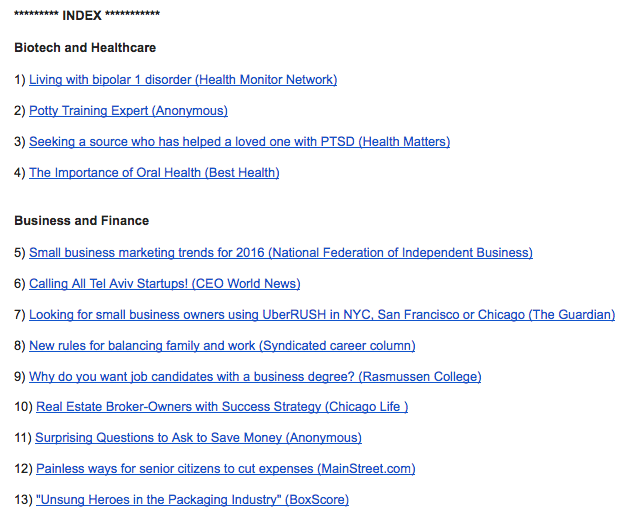

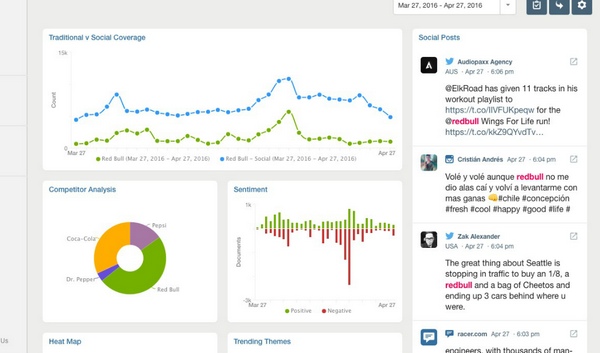
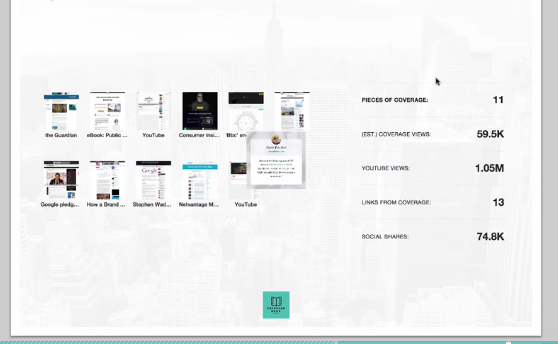

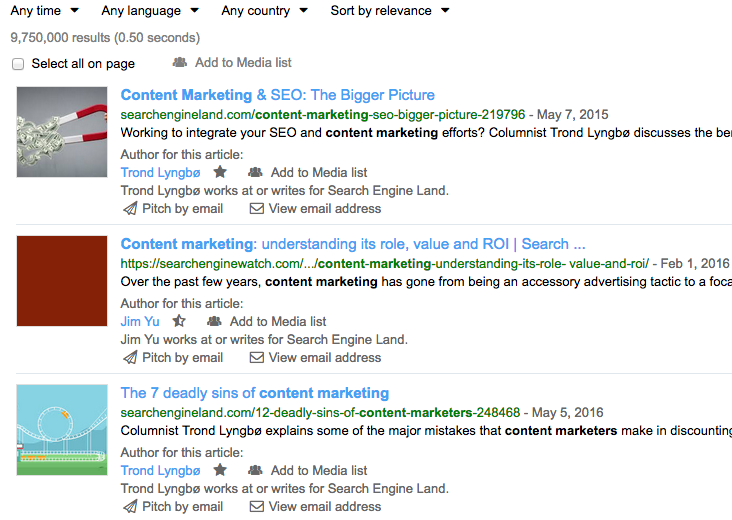

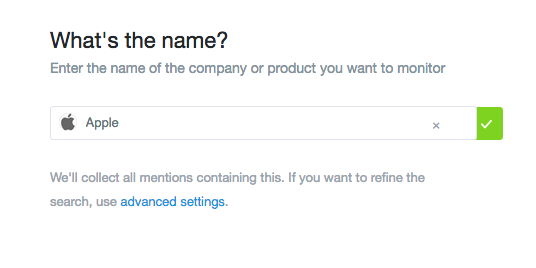
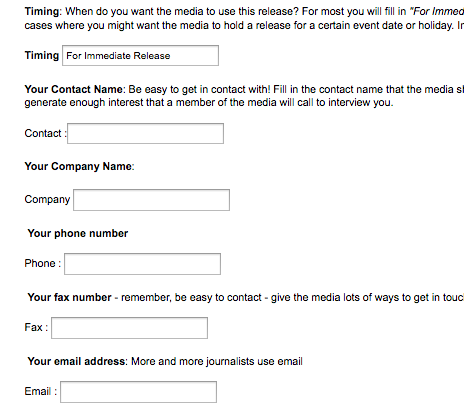

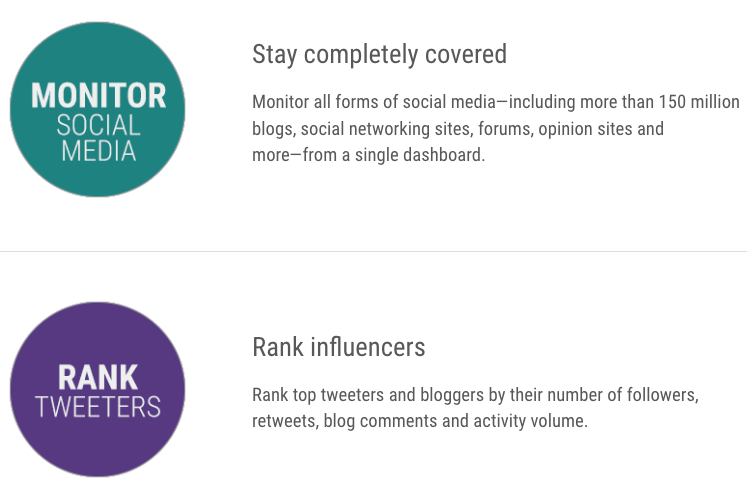
Comments (42)